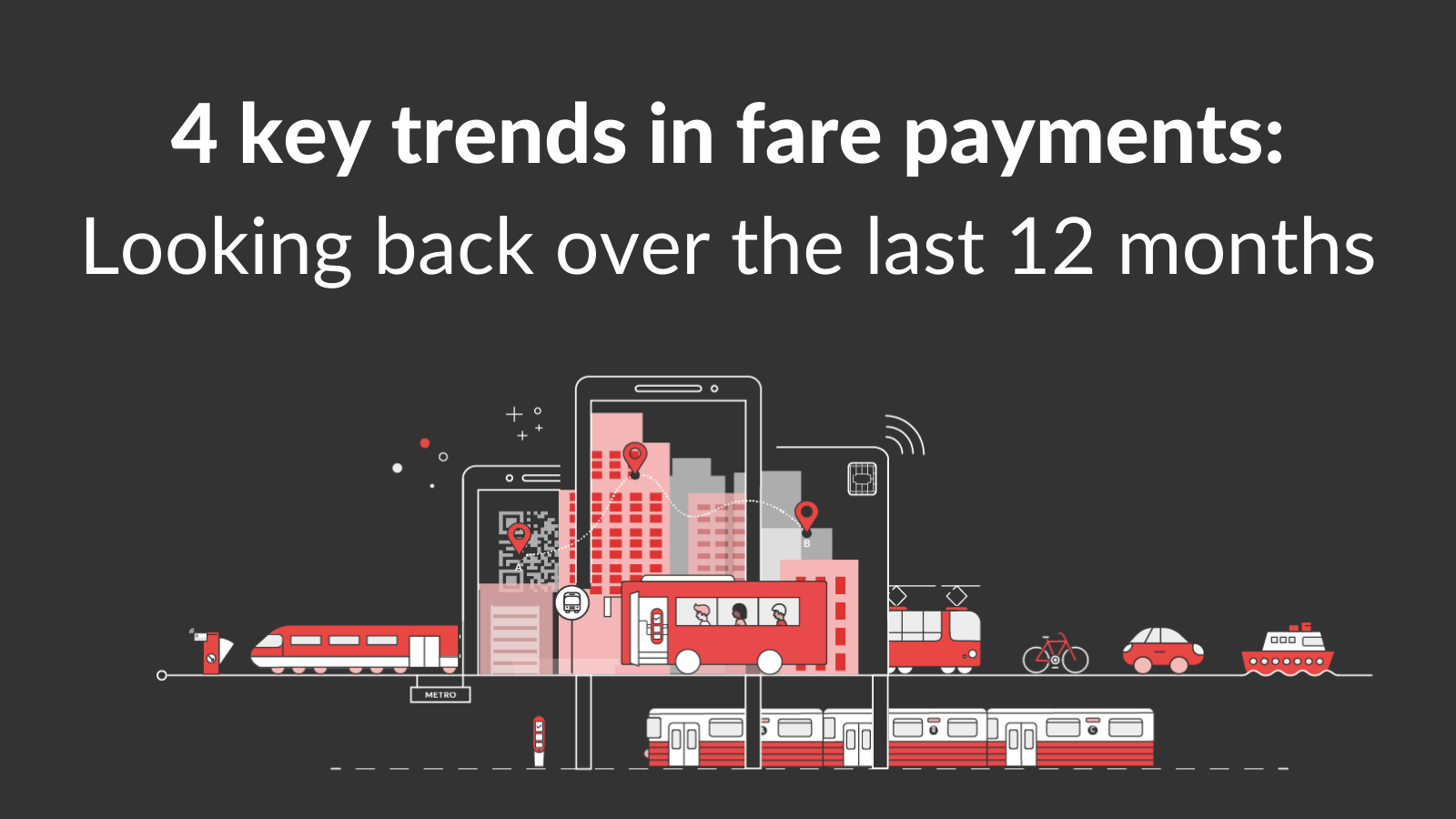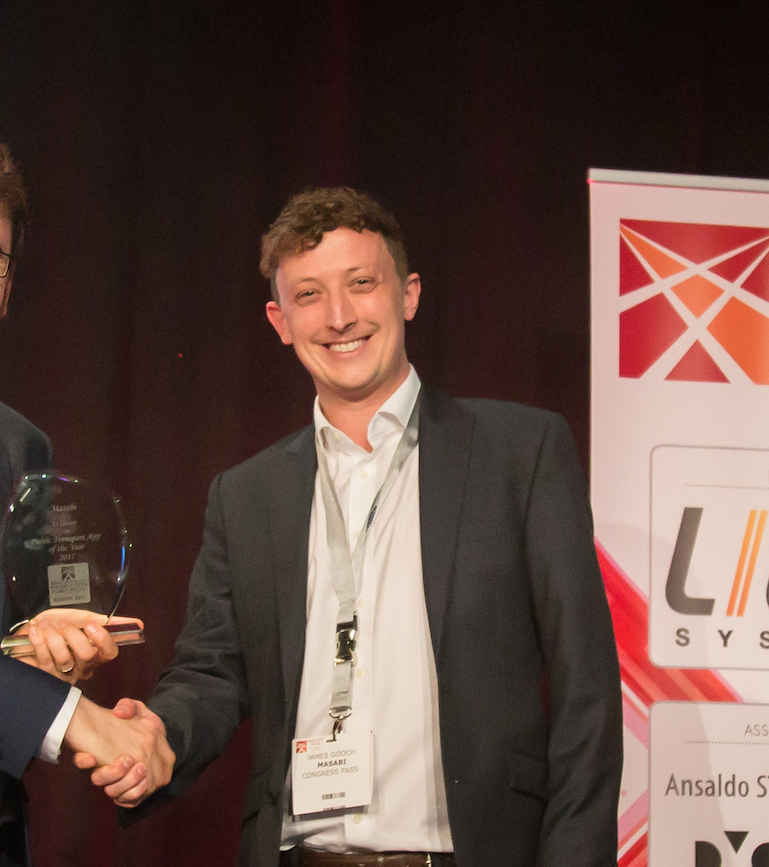With signs of the pandemic receding, and with it, data suggesting that transit usage is on the rise, it feels like there is a sense of optimism to the conversations being had with our customers and the industry. Despite the challenges of the pandemic, 2021 did see some huge advances in fare payments, some of which I think are worth sharing with the community.
Here are the four most important trends that are helping ever more transit agencies reduce costs, deliver fare equity and make the rider experience quick and simple.
- Agencies embrace the benefits of shared platforms with 140 agencies now signed up to Justride.
- Agencies adopt Account-Based Ticketing, with 40 customers embracing ticketless ticketing.
- Agencies prioritise supporting cash riders and the unbanked with new retail network offerings.
- 70 agencies opt-in to an easy way to start their Mobility-as-a-Service journeys.
Agencies embrace shared platforms
Masabi has been on a mission to deliver the benefits of Software-as-a-Service and cloud native infrastructure to the fare payments industry - what we and many in the industry call Fare Payments-as-a-Service (FPaaS).
FPaaS is possible through the delivery of services using a shared platform (with multiple agencies all using the same platform configured in different ways to meet their specific needs). 2021 saw it become the accepted norm for agencies to deliver systems, marking a shift away from each agency needing to design, build, operate and maintain their own bespoke system.
Masabi’s Justride platform now has more than 140 customers across 9 countries signed up to adopt FPaaS, from large Tier 1 cities to small regional services.
Agencies adopt Account-Based Ticketing
More than 40 Masabi customers have now launched or signed-up for Account Based Ticketing (ABT), meaning that riders no longer need to buy a ticket or understand fares to travel, and instead simply tap their contactless bank card, mobile phone or smartcard and let the back-office do the hard work.
Not only does ABT enhance the rider experience, but it delivers fare equity by providing the benefits of discounted period passes based on how much users ride the system, not a riders ability to afford a pass in advance of travel, thanks to ‘fare capping’ rules. It also provides greater flexibility for riders who might be less certain of their travel habits.
In 2021 Masabi became the first complete fare payments platform to launch open payments (cEMV) - the use of contactless bank cards and digital wallets to tap and ride on public transport - in Bilbao, Spain. It also saw some landmark ABT launches in Dayton for GDRTA and in Columbus for COTA.
We loved this quote and video from COTA:
“We know that transit is at the heart of ensuring economic mobility for all in our region, and advancing this new digital fare payment system is truly the right thing to do,” said COTA President/CEO Joanna M. Pinkerton. “By correcting this inequity in our transit system, COTA is taking the next step in guaranteeing all of our residents have equal access to food, jobs, healthcare, the arts and entertainment throughout our region.”
And this one from Brandon Policicchio from GDRTA:
“Traditional transit fare systems have created a situation where customers who are least able to afford the upfront costs of a monthly pass end up paying more, but also end up traveling less by the end of the month. This development is the last piece of the puzzle of our work with Masabi, bringing fare equity to our customers with this technology, and offering them a convenient and contactless method of riding our services.” said Brandon Policicchio, RTA’s Chief Customer & Business Development Officer.
Prioritizing support for cash riders and the unbanked
Since the pandemic began both contactless fare payment systems and enhanced support for cash riders to use contactless fare media have both been top priorities for agencies.
In 2021 Masabi launched enhanced support for cash riders by delivering Vendor Portal, a low-cost web service for transit center and ticket office staff to add funds to riders accounts using cash (and card). It also saw new retail store services launch, allowing riders to use cash to add funds to their accounts, or purchase mobile tickets, in thousands of retail stores across the US and the UK.
Working with partners Incomm Payments, T-Cetra and Payzone, this service is now live with 18 agencies including Las Vegas RTC and Dayton’s GDRTA, helping remove cash transactions on board vehicles and speeding up services.
In fact in Dayton, Ohio, they decommissioned their fareboxes (a trend we think will accelerate) in order to speed up the bus and save costs. Go GDRTA!
Mobility-as-a-Service made easy!
Mobility as a Service (MaaS) is a huge buzz word in the industry. It’s important to remember, all MaaS really means is supporting riders to get from their front door to their destination conveniently without needing a private car.
Masabi takes a different approach to helping agencies start their journeys with MaaS and continues to lead the world in delivering what we call Practical MaaS - where the company’s technology (Mobile Ticketing SDK) is integrated into leading mobility applications from companies such as Uber, Transit, Moovit, Lyft and Jorudan.
With more than 70 agencies now choosing the best applications for their riders; in apps they already use, this trend has accelerated.
In fact, we now have 25 agencies benefiting from Masabi’s open ecosystem by delivering tickets in multiple applications and 15 agencies with 4 applications their riders can use to buy tickets and ride public transit, helping to increase the access and discoverability of services (we think this is pretty neat!)
That’s a wrap
As we look back at 2021 we can see agencies looking to make fare payments contactless and convenient for riders by removing the need to buy tickets and select fares before they travel through Account Based Ticketing. We expect this trend to accelerate. We also expect more agencies to start turning on Open Payment tokens (including contactless bank cards and digital wallets) and using other tokens like smartcards and mobile barcodes to make sure all riders are fully supported with the same convenient experiences and fare equity benefits.
We also think the focus on cash digitization will continue along with the move to enabling MaaS experiences, helping people leave their cars on their drive, reducing congestion and pollution.
If you would like to learn more about any of the topic discussed in this blog then please get in contact.


